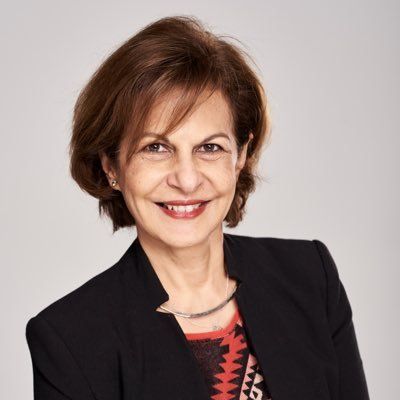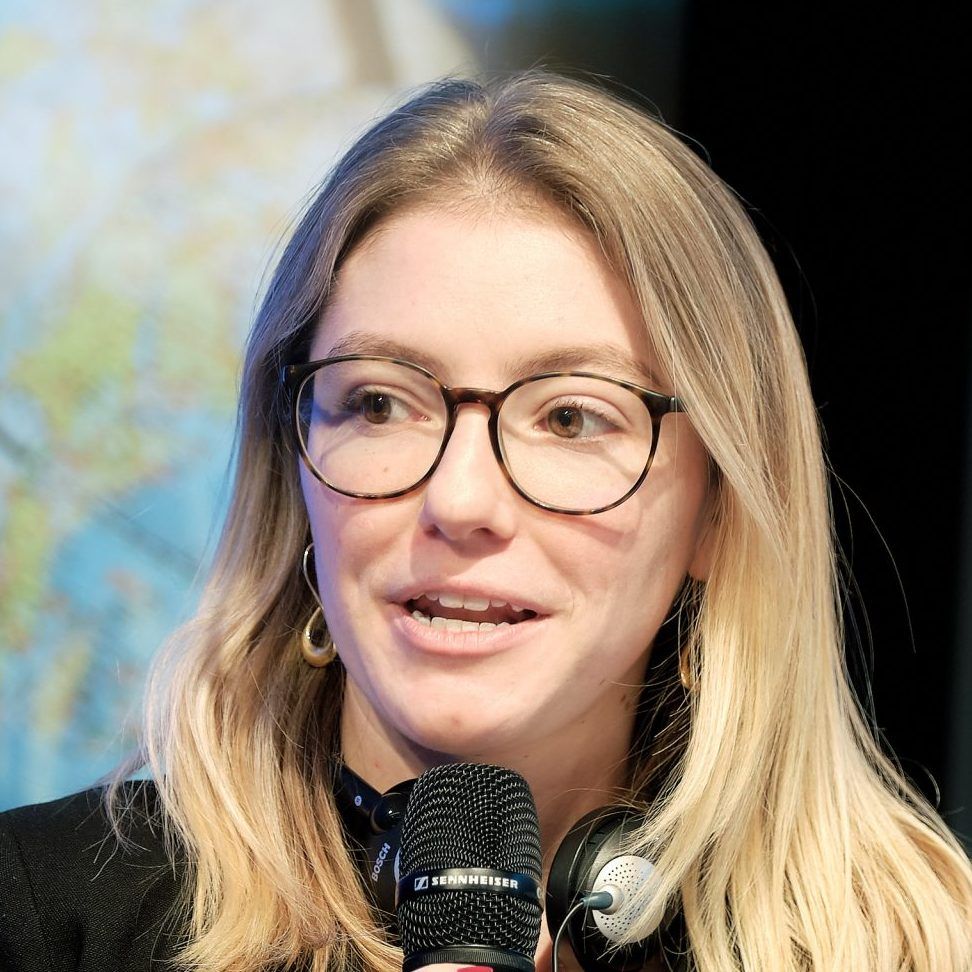Feminism is not a numbers game, it’s about inclusion
#CriticalThinking
Managing Director at New Horizons Project

Head of Evaluation, Learning & Programme Performance
This article was originally published in IDEES Magazine No. 47: Feminism(s).
Feminist leadership is not about the number of women in top jobs. It’s not about symbols and tokenism. It’s about the quality of women in leadership positions, the power they wield and the way they use it.
It’s about the policies women leaders are willing and able to enact, their approach to the world, their ability to do things differently and their capacity to grab opportunities and face up to challenges.
Women leaders aren’t credible when they focus solely on gender equality. Their impact and their relevance are strongest when they adopt and implement actions and policies which are inclusive, open and non-discriminatory.
Women leaders matter when their scope of action covers not just women but when they work for diversity – of all kinds.
While the EU institutions are promoting women into higher echelons, men are still in a majority – as they are in national administrations
The European Union is ahead of other regions in its success in bringing more women into positions of power. The President of the European Commission is a woman: Ursula von der Leyen. Twelve of the twenty-seven European Commissioners are women. The number of women members of the European Parliament is up to 39.5 per cent of the total. And of course Christine Lagarde is President of the European Central Bank.
This is impressive. But let’s be blunt: Europe is still a man’s world. A majority of EU presidents and prime ministers, foreign ministers, finance ministers and defence ministers are men. While the EU institutions are promoting women into higher echelons, men are still in a majority – as they are in national administrations.
So is feminism setting the European agenda? Not yet. The intention is clearly there, but turning words into action isn’t proving easy.
Yes, von der Leyen has broken through the so-called glass ceiling. As the first female European Commission President, she has pushed forward a (re)newed agenda for women’s empowerment and made clear that gender equality is a priority.
Inclusion must be streamlined into all EU policymaking areas
Unveiling the Commission’s new strategy, she insisted: “Gender equality is a core principle of the European Union, but it is not yet a reality. In business, politics and society as a whole, we can only reach our full potential if we use all of our talent and diversity. Using only half of the population, half of the ideas or half of the energy is not good enough. With the Gender Equality Strategy, we are pushing for more and faster progress to promote equality between men and women”.
The Commission chief is right to put gender equality back on the EU agenda. But, regrettably von der Leyen’s definition of “diversity” is limited to gender alone. There is no reference to the even more important concept of “inclusion”.
The truth is that inclusion must be streamlined into all EU policymaking areas. Focusing on gender diversity alone, without reference to a more inclusive definition of diversity, is not what feminist leadership should be about.
Inclusion and diversity are cross-cutting areas that should be referenced at every stage of the Commission’s work
An inclusive work programme
The new Commission work programme makes several references to gender and inclusion –and very briefly to diversity. It talks about the ecological and digital transitions which will affect us all and how we must ensure that no one is left behind.
It mentions overcoming inequalities, violence against women and the gender pay gap; it brings up solidarity, equality and fairness. Von der Leyen’s political guidelines go a step further and highlight the importance of diversity, work-life balance and so on.
The words and intentions are there. But inclusion and diversity are cross-cutting areas that should be referenced at every stage of the Commission’s work – not just when they talk about a new Action Plan on Integration and Inclusion, or about a new Gender Equality Strategy.
When it comes to the digital transition, for example, a lack of diversity can lead to detrimental algorithm biases, creating long-lasting consequences in everything from job-matching programmes to facial recognition technologies– although with the latter some might say that’s for the best.
It is essential to confront the issue of data bias across all areas of regulation
Reassuringly, the Commission’s recent White Paper on Artificial Intelligence takes account of the advice of the AI High-Level Expert Group which sets ‘diversity, non-discrimination and fairness’ as a key requirement to ensure AI’s trustworthiness. The Paper notes that bias and discrimination could be amplified through poorly designed AI and suggest that requirements could include ‘sufficiently representative’ data sets.
However, one recommendation to come out of the Expert Group has not made it into the White Paper – the need to ensure diversity within design teams. While an emphasis on the power of diversity is important to all areas of working, it is especially important when it comes to design in AI where it will ensure that a wider range of concerns are brought to the table. This must be included in any future EU policymaking on the topic.
At the same time, it is essential to confront the issue of data bias across all areas of regulation. In the design and testing of everything from healthcare and pharmaceuticals to car safety mechanisms, the average Caucasian male body is all too often treated as the ‘default setting’– resulting in injury and even death of those who do not share the same physique.
Ensuring inclusive regulation in these areas is a cause that the EU can – and should – champion.
Current systems and structures were built up at a time when men held the majority of leadership roles
A feminist approach to leadership
Achieving parity is too often viewed as the endgame in the fight for gender equality. But more women holding leadership positions –policymaking positions, thought leadership positions – has little value if these women conduct themselves and formulate policies which are no different from those favoured by men.
It’s not easy to be different, to take a different course. It requires courage and a thick skin. Current systems and structures were built up at a time when men held the majority of leadership roles. Women are expected to follow the rules, stay on course – and not rock the boat.
There is public wariness of women leaders who dare to be different, to wield power in a different way and to bring fresh thinking into politics and governance.
Put simply: women are expected to act like men to gain and hold positions of power. This is quite simply because our society’s definition of power is based on the traits of men who have long been in charge.
It’s vital to ensure that hiring criteria go beyond traditional measurements of aptitude
But societies and our world are in rapid transformation – and the old way of doing things, of leading are no longer valid, appropriate or convincing. Old definitions of power are just that: inappropriate and out-of-date.
Inclusion means reaching out to and incorporating people – men and women – with different ethnic, religious, cultural and social backgrounds so that all points of view are taken into account when formulating policies.
As such, it’s vital to ensure that hiring criteria go beyond traditional measurements of aptitude and instead seek out talented people who embody the best of the best – confident and bold, empathetic and humble.
The cabinet of the historic Austrian coalition government between the conservative People’s Party and the Greens – also the country’s first female majority government – is an apt illustration of why this matters: in one of her first interviews, Susanne Raab, the Federal Minister for Women and Integration noted that she had never faced sexism in the workplace.
What message does such a comment send to the less-privileged and why would such a female minister be expected to approach things any differently from male colleagues?
In New Zealand, meanwhile, Prime Minister Jacinda Ardern and her government are taking a different approach. New Zealand’s decision to streamline wellbeing across its entire budget and the work of all its ministries is an illustration of Ardern’s empathetic and inclusive approach to governance. No surprises then that she is making waves the world over.
The experience of one is not the experience of all
Diverse teams do things differently
It’s simple: diverse teams do things – policies – differently. This is why the conversation must go beyond just gender equality and must be about inclusion in the broadest sense – inclusion of people from different socio-economic, religious and ethnic backgrounds.
This means following an intersectional approach that takes all of these differences into account. The experience of one is not the experience of all.
Diversity is essential. It not only brings in new, creative thinking, but also ensures the participation of people who keep in mind the needs of those who might otherwise be forgotten.
So while a focus on gender equality is important, it is not enough on its own. Now is the moment to take a broader look at the doctrines that should be driving Europe forward. To take the concept of inclusion to heart. Seriously.
Perhaps ‘inclusivism’ is the next step in the battle for equality
It’s time to take an inclusive approach. One that acknowledges people’s individual struggles – whether they face gender discrimination, homophobia or transphobia; Islamophobia or anti-Semitism; an impoverished upbringing or flight from conflict.
This should be the EU’s approach to equal representation – because there is no real equality if any one group is left behind. In the Latin, e pluribus unum – out of many, one.
‘Inclusivism’ as the next step?
Some might say that this line of thinking constitutes a new, updated and inclusive brand of feminism. And why not?
The belief in solidarity through empathy and a common struggle is the ultimate feminism. Including not just women in the journey towards equality but also seeking to encompass diversity in all its glory is a form of new, inclusive feminism.
Perhaps ‘inclusivism’ is the next step in the battle for equality since it builds upon the feminist struggle – but also transcends it.
Stay informed
